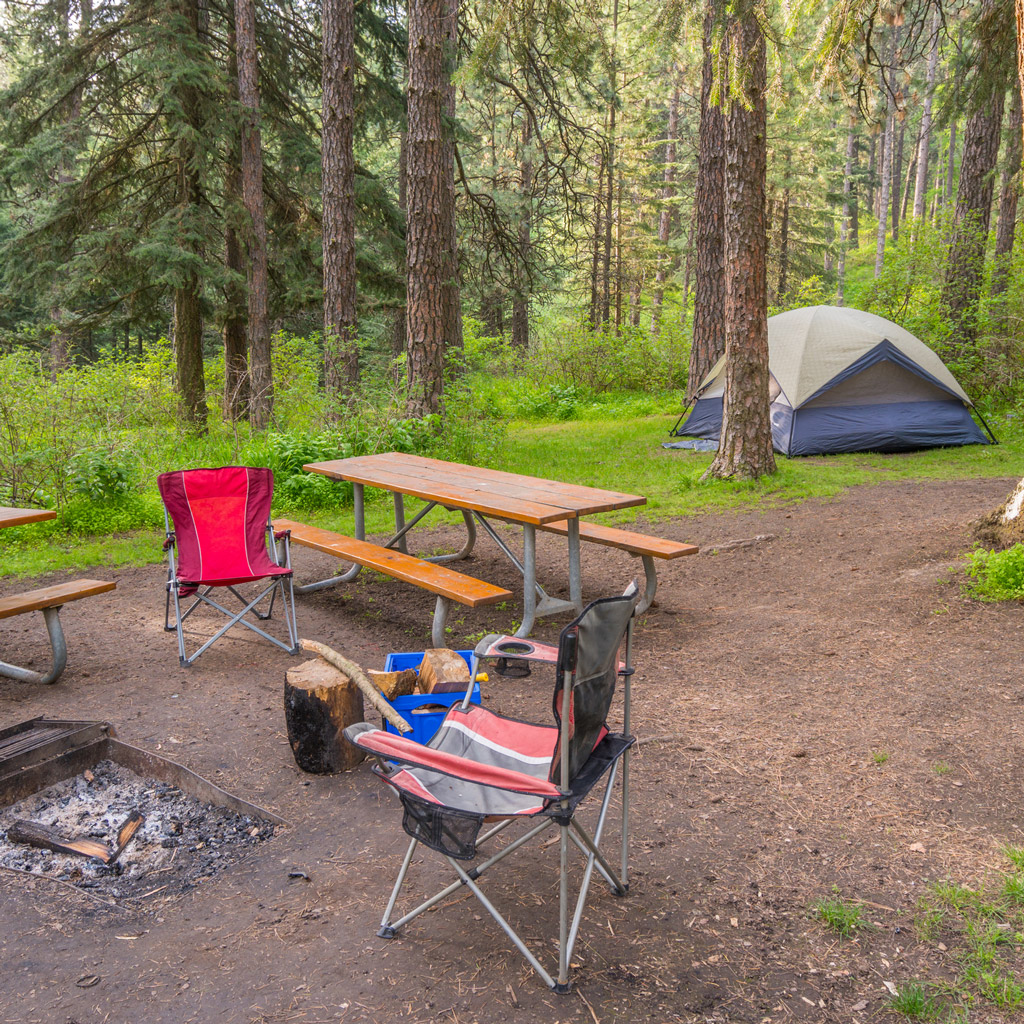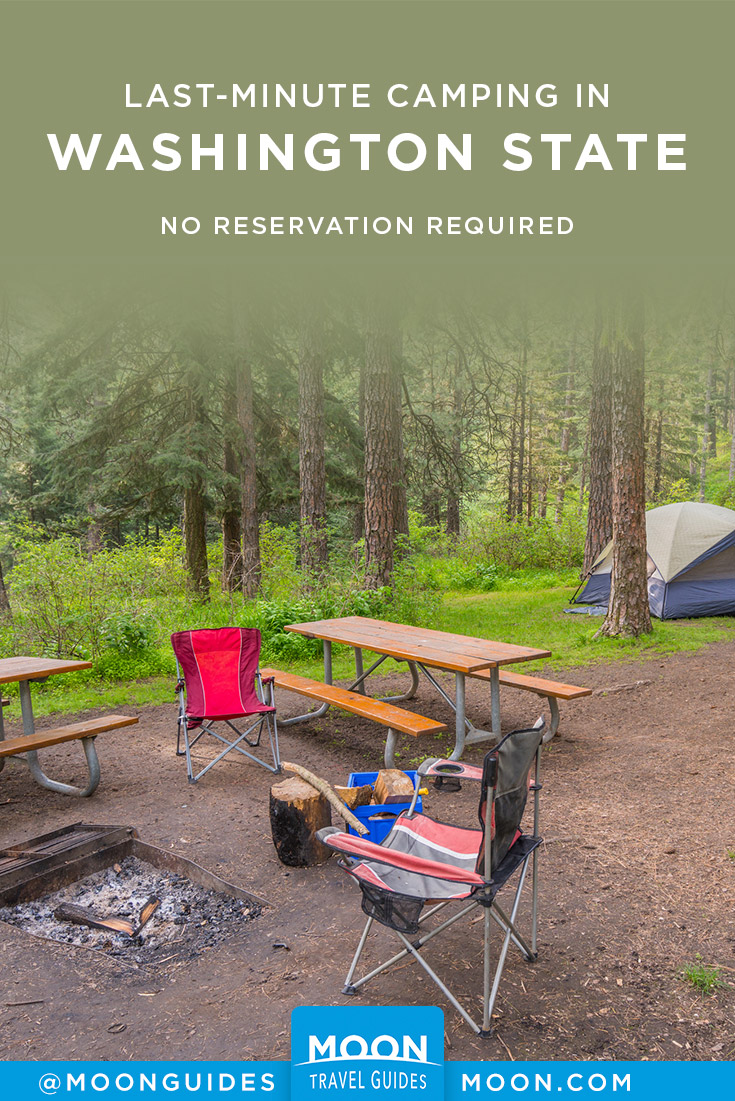Last-Minute Camping in Washington State
Sometimes, you just need to escape for a weekend—away from your routine, your desk, and the business of everyday life. For this kind of wanderlust, there’s no better cure than the great outdoors. When you find yourself craving fresh air and a night under the stars, finding last-minute campgrounds can be a pain (not to mention expensive). Luckily, you’ll find tons of sites in Washington State that don’t take reservations—freeing you up to take that impromptu camping trip anytime this summer. Below are some of our top choices for last-minute camping trips in Washington, organized by region. Just pack up the car and try to arrive on the early side, as many of these campgrounds fill up on summer weekends.
Note that some of these require a Discover Pass in place of a camping fee; for a very reasonable cost ($35 for an annual pass, $11 for a one-day pass), this pass allows you access to millions of acres of state recreation lands in Washington.

The Olympic Peninsula and Washington Coast
Klahowya: Klahowya features great views of Lake Crescent and Mount Olympus. It’s a good choice if you don’t want to venture far from U.S. 101 yet want to retain the feel of being in Olympic National Forest. Set along the Sol Duc River, this 32-acre camp is pretty and wooded, with hiking trails in the area. Kloshe Nanitch Trail is across the river and leads up to a lookout on Snider Ridge overlooking Sol Duc Valley. Pioneer’s Path Trail, an easy, wheelchair-accessible, 0.3-mile loop with interpretive signs, starts in the camp. Fishing for salmon and steelhead, in season, can be good about a quarter of a mile downstream from camp. This camp gets medium use, but can fill up on weekends.
Minnie Peterson: If location is everything, then it’s why this campground has become popular. Minnie Peterson is set on the Hoh River on the edge of the Hoh Rain Forest. It’s quite pretty, forested with Sitka spruce and western hemlock, and offers nice riverside sites. Bring your rain gear!
Lena Lake Hike-in: Lena Lake is one of the most popular lakes on the Olympic Peninsula. Though it is comparatively crowded in the summer, you can usually get a site. The 55-acre lake is nestled along the Hamma Hamma drainage between rugged peaks and adjacent to the Brothers Wilderness. It takes a three-mile hike-in from the trailhead at Lena Creek to reach this camp. This adventure is suitable for the entire family—an outstanding way to turn youngsters on to backpacking. (They may get a chuckle out of the “open-air” toilet or “potty with a view.”) It’s a lovely setting, too, with a pleasantly mild climate in summer. The lake is good for swimming and fishing for rainbow trout.
Seal Rock: Seal Rock is a 30-acre camp set along the shore near the mouth of Dabob Bay. This is one of the few national forest campgrounds anywhere located on saltwater. It brings with it the opportunity to harvest oysters and clams in season, and it is an outstanding jumping-off point for scuba diving. Most campsites are set along the waterfront, spaced among trees. Carry-in boats, such as kayaks and canoes, can be launched from the north landing. The Native American Nature Trail and Marine Biology Nature Trail begin at the day-use area. These are short walks, each less than half a mile.
Seattle and the Puget Sound
Lily Lake Hike-in: This tiny, remote hike-in campground is one of those camps that few people ever go to or even know about. Set on little Lily Lake, it’s completely secluded and primitive; you’ll have to pack in everything you need and pack out everything that’s left. Recreation options include fishing and hiking; hikers and horse packers alike use the nearby trails.
Camano Island State Park: This park features panoramic views of Puget Sound, the Olympic Mountains, and Mount Rainier. Set on the southwest point of Camano Island, near Lowell Point and Elger Bay along the Saratoga Passage, this wooded camp offers quiet and private campsites. The park covers 244 acres and features 6,700 feet of rocky shoreline and beach, three miles of hiking trails, and just one mile of bike trails. Good inshore angling for rockfish is available year-round, and salmon fishing is also good in season. A diving area with kelp is available, as well as a self-guided nature trail.
The Northern Cascades
Harts Pass Walk-in: At 6,198 feet elevation, Harts Pass is one of the highest drive-through mountain passes in Washington. It features great panoramic views of Mount Gardner, Silver Star, Tower, Golden Horn, Mount Azurite, Ballard, Crater Mountain, Mount Baker (on a clear day), Jack Mountain, the Pickets Range, Pasayten Peak, and Mount Robinson. This pretty little campground is near the Pasayten Wilderness, which offers 500 miles of trails leading to alpine meadows and glacier-fed lakes and streams, and along ridges to spectacular mountain heights. The Pacific Crest Trail passes near the camp and offers a great view of the northern Cascade Range.
Glacier View: This popular campground is set on the southwestern shore of Lake Wenatchee, near the head of the lake. It’s a happening spot for boating, swimming, fishing, and windsurfing, and it fills up on summer weekends. There are also some good hiking trails in the area and a golf course within a 10-minute drive. The camp sits at an elevation of 1,900 feet. Insider tip: The walk-in sites are set on the lake’s shore, requiring a walk of about 100 feet.
Northeastern Washington
Cold Springs: It’s quite a drive to get here, but you’ll be happy you made the effort to reach this pretty forested camp. Campsites are located near a small stream amid a forest of lodgepole pine, western larch, and several species of fir, including Douglas fir. Trails for horseback riding, hiking, and snowmobiling run through the area. Because the camp is little known and remote, it’s advisable to obtain a map of the area from the Department of Natural Resources.
Beth Lake: This campground is set between Beth Lake and Beaver Lake, both small, narrow lakes stocked with rainbow trout and brook trout. A 1.9-milelong hiking trail (one-way) connects the two lakes. Other side trips in the area include Lost Lake, Bonaparte Lake, and several hiking trails, one of which leads up to the Mount Bonaparte Lookout.
Fort Spokane: Rangers offer evening campfire programs and guided daytime activities at this modern campground on the shore of Roosevelt Lake. This park also hosts living-history demonstrations. Fort Spokane is one of more than two dozen campgrounds on the 130-mile-long lake. A 190-mile scenic vehicle route encircles most of the lake.
The Columbia River Gorge and Mount Rainier
Merrill Lake: Campers seeking a quiet setting will enjoy this site, which has a reputation as the top fly-fishing area of western Washington. Due to its popularity, there is a three-day stay limit. The campground is nestled in old-growth Douglas fir on the shore of Lake Merrill, very near Mount St. Helens. It’s free and provides an alternative to the more developed parks in the area, especially those along the main access roads to viewing areas of the volcano. The lake provides fishing for brown trout and cutthroat trout but is restricted to fly-fishing only, with no gas motors permitted. These restrictions make it ideal for fly fishers with prams or float tubes. (Note: Campground closed November 15-May 12.)
Tillicum: This pretty camp is primitive but well forested, and within walking distance of several recreation options. A 4.5-mile trail from the camp leads southwest past little Meadow Lake to Squaw Butte, then over to Big Creek. It’s a nice hike, as well as an excellent ride for mountain bikers. This is a premium area for picking huckleberries in August and early September. The Lone Butte area about five miles to the south provides a side trip. There are two lakes nearby, Big and Little Mosquito Lakes, which are fed by Mosquito Creek.
Beacon Rock State Park: This state park features Beacon Rock, the second-largest monolith in the world, which overlooks the Columbia River Gorge. Lewis and Clark gave Beacon Rock its name on their expedition to the Pacific Ocean in 1805. The Beacon Rock Summit Trail, a 1.8-mile roundtrip hike, provides excellent views of the gorge. An eight-mile loop trail to Hamilton Mountain (2,300 feet elevation) is one of the best hikes, featuring even better views than from Beacon Rock. Rock climbing is excellent here, with the climbing season running mid-July-January. Fishing for sturgeon, salmon, steelhead, smallmouth bass (often excellent), and walleye is available in season on the Lower Columbia River below Bonneville Dam; check regulations.
Southeastern Washington
Palouse Falls State Park: This remote state park is well worth the trip. Spectacular 198-foot Palouse Falls is a sight not to miss. A 0.25-mile wheelchair-accessible trail leads to a waterfall overlook. The park is set at the confluence of the Snake and Palouse Rivers, and it does not receive heavy use, even in summer. The park covers 1,282 acres and features a waterfall observation shelter, shaded picnic facilities, historical displays, and an abundance of wildlife.
Tucannon: For people willing to rough it, this backcountry camp in Umatilla National Forest is the place. It has plenty of hiking, fishing, and hunting, all in a rugged setting. The camp is set along the Tucannon River, which offers a myriad of recreation options for vacationers. It is popular from early spring (the best time for fishing) through fall (when it makes a good hunting camp). In summer, several nearby ponds are stocked with trout, making it a good family destination.
Alder Thicket: Hardly anybody knows about this spot, including people who live relatively nearby in Walla Walla. It is set at an elevation of 5,100 feet, making it a prime base camp for a backcountry hiking adventure in summer or a jumping-off point for a hunting trip in the fall. This is a primitive camp, but it’s great if you’re looking for quiet and solitude.
Related Travel Guide
Pin For Later

